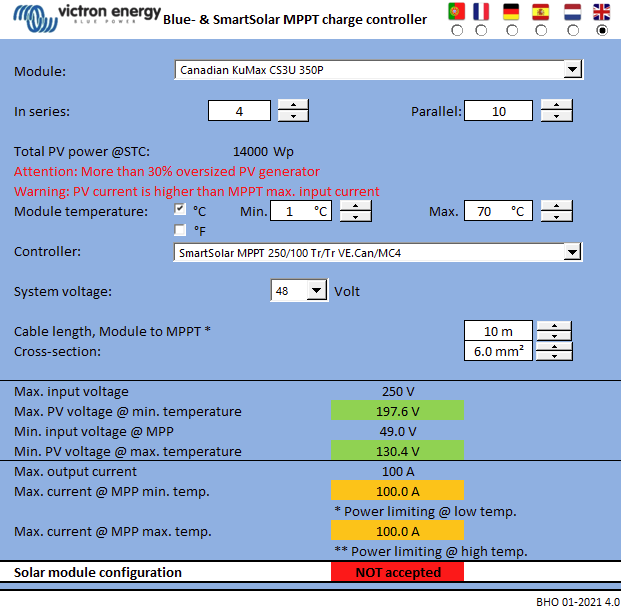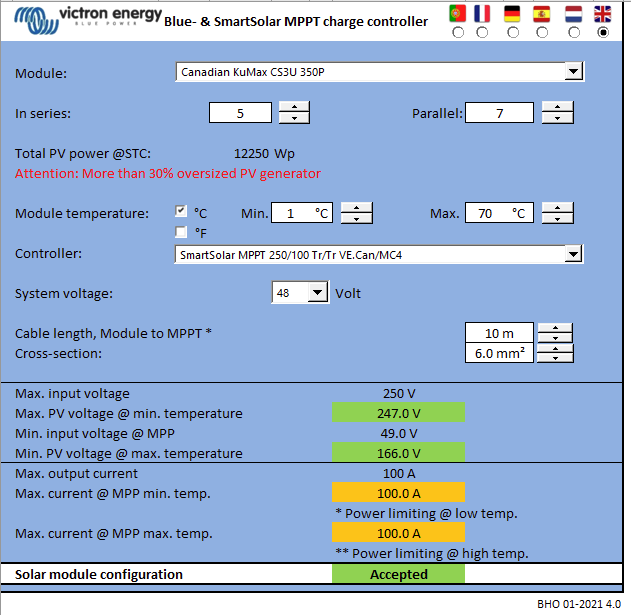Yes. But… there are limits. Let me explain quickly. The MPPT behaves a bit like a DC “transformer”. So it swaps volts for amps so that the overall power is more or less the same (within 95% usually).
So if you start with 200V at 5A, 100V at 10A, or 60V at 16A, and all of those would give you 20A on the battery side, if the battery happens to be at 50V.
But… the FET(s) inside the buck converter that makes up that MPPT has a limit, and you need to stay under that. For example, consider the 250/70:
So while it will clip at 3500W (50V times 70A), it would be unwise to wire your PV in 2-series multiple-parallel strings, because then you’ll run at 100V, which means that at 3500W you are right on the 35A limit.
Now with Victron MPPTs, it is actually fairly hard do mess this up, since they have fairly high limits as long as you are not a complete idiot.
But my point is that you must be careful, if you oversize by 60%, that you don’t end up exceeding this value. For the 250/70 model in this example, you want to run right around 200V, so 4-series, 3 parallel most likely. Assuming 400W modules (to make the math easy), that is 4800W total that will be safely clamped at 3500W (ish), getting you a maximum of around 4800/3500 = 1.37, or 35% oversizing.
For other hardware, the limits might be worse. Some Goodwes for example have an 11A input limit, so a single string is the max you can connect to it, and you can oversize only until you hit the max voltage, then it’s over. Some other popular inverters have a limit of 22A, which pretty much limits you to two strings.





